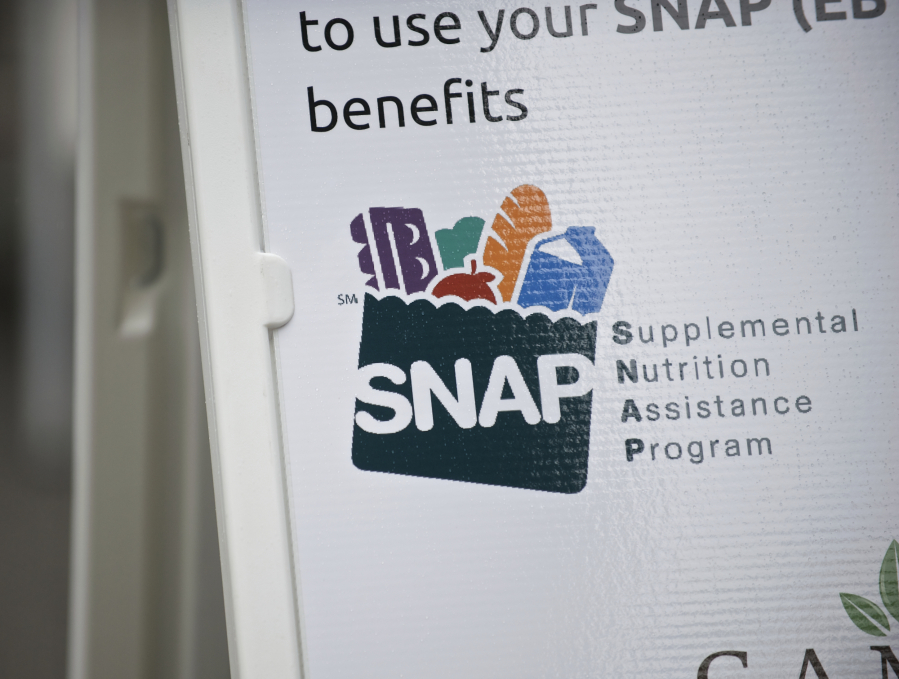The Trump administration’s proposed changes to food stamps eligibility would impact an estimated 175,600 Washingtonians annually, according to a comprehensive impact statement completed last month by the state Department of Social and Health Services.
Babs Roberts, director of the department’s community services division, said she’s been working with the governor’s office to write a document laying out potential impacts. The public comment period ends Sept. 23.
The U.S. Department of Agriculture announced in July that it wants to close a loophole that gives states flexibility in determining who is eligible for the Supplemental Nutrition Assistance Program.
Members of Washington’s Democratic delegation, including Sens. Patty Murray and Maria Cantwell, on Thursday sent a letter to Agriculture Secretary Sonny Perdue decrying the proposal, describing SNAP as a critical program that helps to reduce food insecurity and poverty while improving nutrition.
“We have heard from leaders of locally-based organizations and faith-based communities across the state that this rule change will only put a greater burden on food banks that are already struggling to meet existing food assistance needs,” the letter said. “This rule will undermine low-income families’ health and jeopardize the food security and development of young and school-aged children. We urge you to consider the harmful impact of this proposed rule and to rescind it as soon as possible.”
Currently, those who receive a service funded by Temporary Assistance for Needy Families — including a toll-free number or brochure — are eligible for SNAP. Using what’s called “broad-based categorical eligibility,” states can increase limits on household income and remove limits on assets. This doesn’t guarantee a household will receive benefits, but it allows them to meet most requirements.
For years, Washington has used this flexibility to increase the maximum eligible income level from 130 percent to 200 percent of the federal poverty level. That translates to a single person earning between $16,237 and $24,980 or a four-person household earning between $33,475 and $51,500 annually. The state adopted this policy because these households “do not have resources to be self-sufficient in meeting basic needs,” DSHS’s impact statement said.
Under the proposed rule, Washingtonians in this income bracket would no longer be eligible for SNAP, called Basic Food in Washington. That equates to an estimated 35,211 households that would be ineligible. They average $60.02 in monthly food assistance.
“It’s not a significant amount of money, but it’s enough for a family living on the edge” to have trouble absorbing, Roberts said.
DSHS said taking away those benefits would remove approximately $3.6 million in monthly spending from the local economy. Households may instead turn to food pantries, putting more pressure on those systems.
The impact statement notes that food stamp recipients include thousands of children and seniors.
“The proposed rule blocks access to supplemental assistance to purchase food necessary for the health and well-being of our most vulnerable populations,” it said. Each month this would impact an estimated 5,025 Clark County clients, who represent 9 percent of all SNAP recipients. In June 2018, the county averaged 1.8 clients per household.
Roberts is worried about the change’s impact on ancillary programs that many Basic Food recipients also use.
Food Stamps by the Numbers
175,600 Washingtonians who may no longer receive Basic Food under proposed eligibility changes.
5,025 estimated Clark County residents impacted by proposed changes.
$60.02 average monthly food stamps allotment.
$51,500 double the federal poverty level for a four-person household.
63.2 percent Basic Food Employment and Training participants who become employed.
1.8 average clients per Basic Food household in Clark County.
Source: Department of Social and Health Services
An estimated 15,663 students in Washington automatically qualify for free or reduced-price meals, and many households qualify for free cellphone programs and Low-Income Home Energy Assistance Program payments. The proposed rule would also limit access to Basic Food’s employment and training program that results in employment for most of its participants, whose goal is to earn a livable wage, the impact statement said.
Households must receive Basic Food to qualify for the Working Family Support cash assistance program, but if households earning 130 percent of the federal poverty level no longer qualify for food stamps, they would also no longer be eligible for Working Family Support. That would impact an estimated 2,794 households.
Roberts said DSHS may not save money in the long run because it would add administrative costs. It increases work as it decreases caseloads because there are more steps in the eligibility process, she explained.
The department may have to review the assets of an estimated 327,780 households earning under 130 percent of the federal poverty level — a task that would take thousands of hours. The ongoing work to verify household resource and increased time spent with each case would take another 12,372 hours annually, the equivalent of 110 full-time employees.
That doesn’t include the time it would take to train staff on the new processes or conduct additional administrative hearings for denied cases, the impact statement said.
Roberts said DSHS is going to look more closely at what it would cost to implement the Trump administration’s proposed rule.




